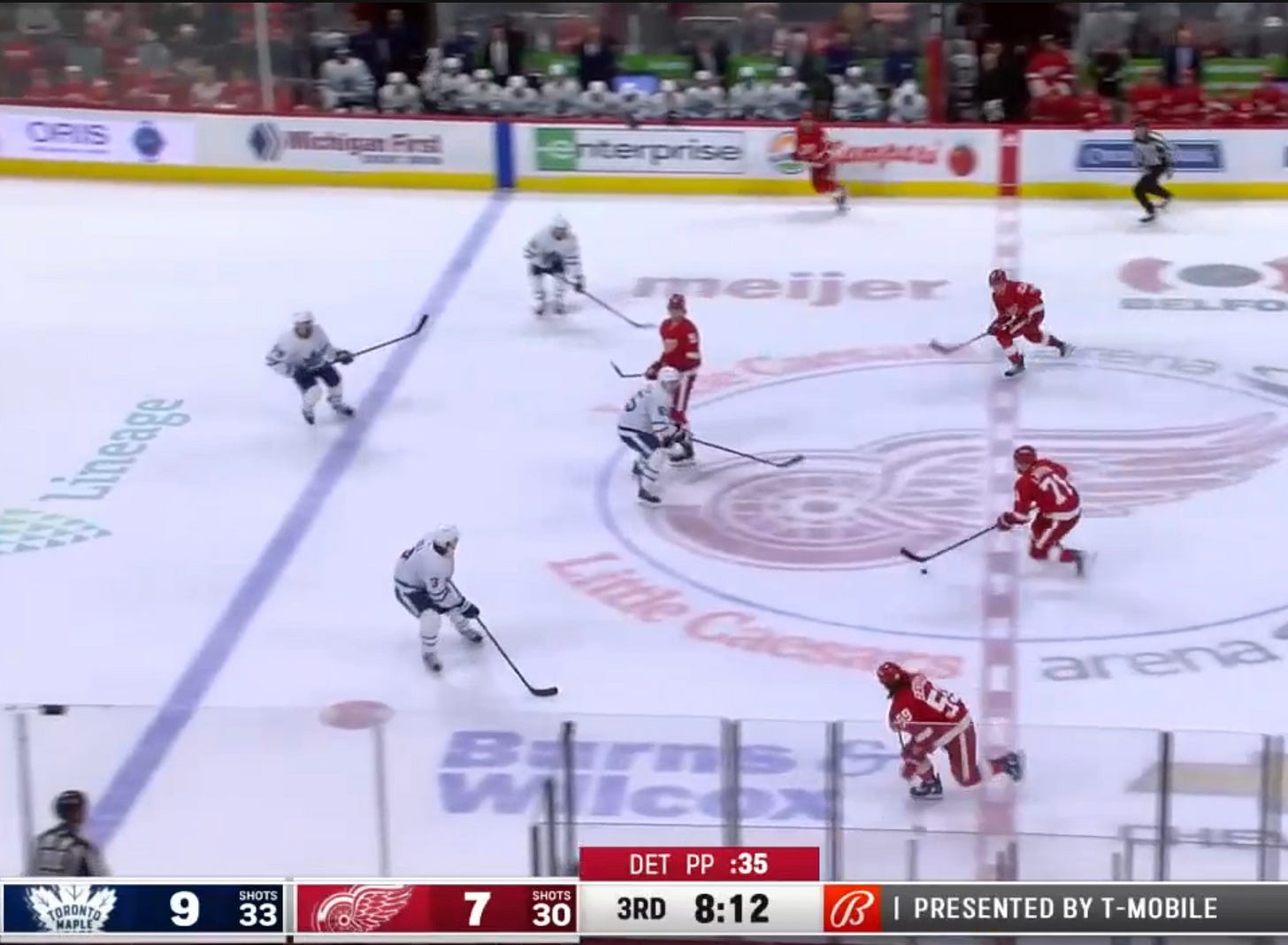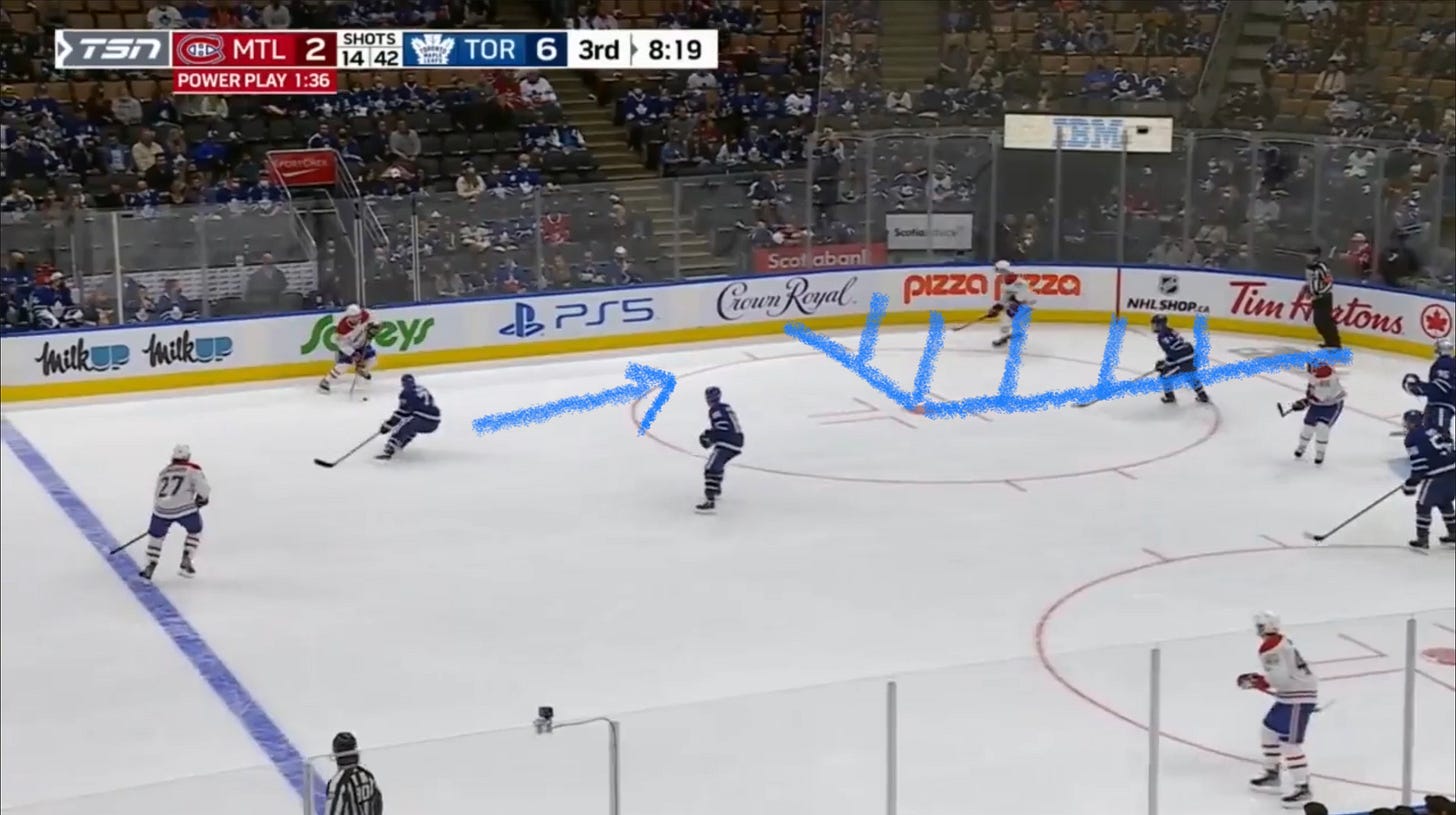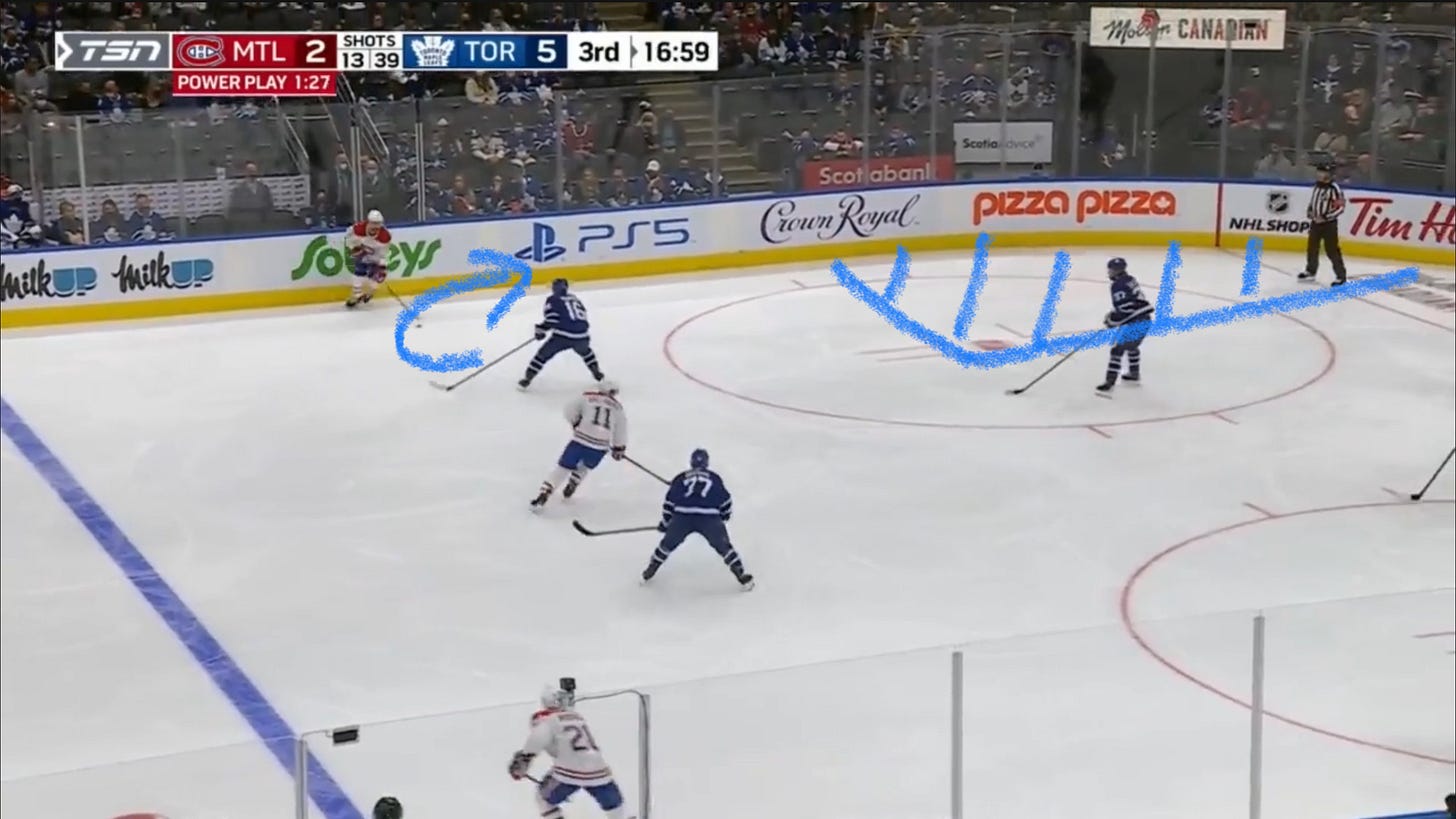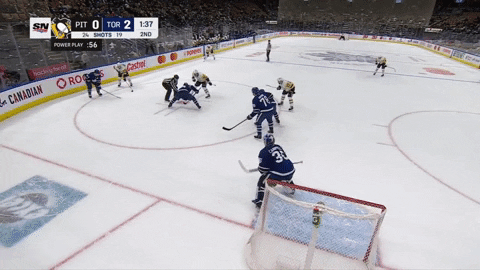Most weeks, this newsletter focuses on tactics and concepts, but rarely do we talk about team systems.
But we thought this week we’d dig into the Toronto Maple Leafs penalty killing system to find out what makes it effective.
Background
Dean Chynoweth was brought in as an assistant coach for the Toronto Maple Leafs this season. Dean spent the last season with the Carolina Hurricanes, who were first in the NHL on the penalty kill. Toronto on the other hand was ranked 23rd. Surprising to most is that despite their struggles keeping the puck out, they were 1st in scoring chances-for while shorthanded.
Both metrics have increased this season. The Leafs have gone from 78.5% to 85%, good for 5th in the NHL. (Carolina is currently #1 at over 90%!!!) And Toronto is #1 in chances-for with Mitch Marner being #1 in chance-for while short-handed.
What makes the Toronto Maple Leafs’ penalty kill so effective?
"If we're gonna get beat, we're going to get beat through aggressiveness and not through passiveness." - Alexander Kerfoot on new Leafs assistant Dean Chenoweth's remodeled penalty kill
Analytically Speaking
The analytics community has dubbed this aggressive attack style, “power killing.” This has been a concept since I was a youth player, and it meant that we were going to try to score rather than just sit back and ice the puck. Since that time, we’ve seen several instances where the numbers support this bold strategy.
Matt Cane (Now with the New Jersey Devils) published back in 2016 that an aggressive penalty kill doesn’t just score more, it also results in better defense as well!
Mike Pfeil presented at the 2019 Seattle hockey analytics conference and found the same results. Link to his slides.
Concepts
Before diving into the specifics, there are three key high-level concepts the Maple Leafs use to great effect:
1) Challenging at the blueline
The red line and blue line are both natural barriers in ice hockey. We’ve written about this and its effect on forming quality tactics.
The Leafs are no different. Rather than challenging up ice in the opponent’s zone, they choose to clog up the neutral zone (NZ) and challenge the opposing power play to find ways to get through the mush while staying onside.
2) Forcing the puck into tight areas
The Leafs force the puck to the wall and attempt to stop movement and create puck battles. This is done through the NZ and in the defensive zone (DZ).
When choosing personnel to get the job done, they choose aggressive and fast players who can quickly close off space, such as Mitch Marner, David Kampf, Ilya Mikheyev, and Alexander Kerfoot. If injuries occur, they’ll use Ondrej Kase, Pierre Engvall, and William Nylander.
3) Coordinated pressure
First, they are challenging players and forcing them into battles. At that point, they use an aggressive concept called “4-go” to sniff for turnovers.
Further reading - Understanding “4-go” and penalty kill pressure keys
Defending the Neutral Zone
Through the NZ, the Leafs use a retreating diamond.
The structure starts at the red line and eventually makes its stand at the blueline. Again, these are solid tactics given the icing and offsides rules. Here is what attackers will see.
The diamond compresses as a team progresses through the NZ. It’s a daunting task for the opposition to carry or pass its way through.
This often leads to opposing teams attempting soft chips or dumps into the zone. The furthest player back (#78 Brodie) in the middle sweeps to the puck that comes through.
If dumped in, the puck will have two Leafs penalty killers on it and will continue to apply pressure on a contested puck. The near-side forward latches onto the wall option while the weak-side forward heads back to the low slot between the hash marks.
In-Zone Penalty Kill
The diamond through the NZ gives way to a wedge+1 (2 D at the side of the net, 1 F in the slot area, & 1 F who is free to force play as the “force defender”) once in the defensive zone. With their +1 player, the Leafs have a simple goal: Keep the puck to one side.
The route the penalty-killing ‘force’ player takes is to go up ice first, then to angle the play down the wall second.
The more complex goal is to force the play toward a tight area and into defensive help. In the Leafs’ case, it’s the corner.
With stick detail attempting to deter the pass to the point, the Leafs incentivize the puck to either be skated or passed low into the corner area.
If the puck is carried, the PKer continues to drive the play all the way low. If the puck is passed, the player continues to cut off the pass back and follows the play around.
The opposition is aware and will try to pass off the player’s heel or around their PKers stick. Often these will hit their stick or skate and turns into a loose puck.
The Maple Leafs are not content to sit around and wait. They actively and aggressively use a “4-go” tactic to compress the immediate and easy passing options.
A rim, bobble, or push into a tight space activate every PK player to attach to their closest opponent. You can see the player gravitate toward the puck battle and nearest opponent. The Red Wings player is forced down the wall and into an easy turnover.
When one person goes, they all go. This pack-hunting tactic has been highly effective. Here is a great example of how Toronto is pack hunting off a rimmed puck. The second PK forward is able to read and react to pick off the pass.
Offense
The offensive side is all about playing with expectation. A second or third player is expected to join the rush as soon as the Leafs gain possession. This could even be a defenseman, like Justin Holl in the below clip.
The 4-go strategy means there is a connection among all players. Toronto is able to create 2v1s before the power play can get back and respond. Here we see defenseman Morgan Reilly move up and be able to lead the attack as the puck is turned over.
Those speedy players we talk about earlier? They can simply use their speed to turn on the afterburners. Everyone knows the expectation is to sprint up ice and generate offense. Gain speed first, the puck will then shortly arrive with a great positive speed differential.
Why Has the Toronto Maple Leafs’ PK Improved?
They strategically force the play early and often into poor areas of the ice. They protect the red and blue lines, angle the power play to poor areas, and use coordinated pressure to force turnovers.
The Leafs have a coordinated plan for all situations when conditions are in their favor. Their increased focus on details with aggressive execution has led to great results and turned an average PK into a potent weapon.
Further reading
Did you enjoy this newsletter?
Help us spread the ideas within and share it with the people you care about


















